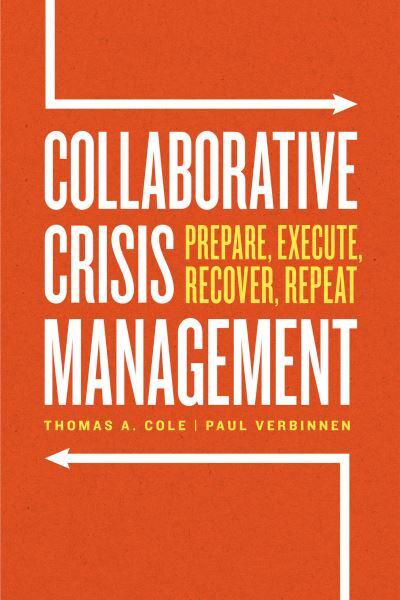Collaborative crisis management
prepare, execute, recover, repeat
- ISBN: 9780226821375
- Editorial: University of Chicago Press
- Fecha de la edición: 2022
- Lugar de la edición: Chicago. Estados Unidos de Norteamérica
- Encuadernación: Rústica
- Medidas: 23 cm
- Nº Pág.: 192
- Idiomas: Inglés

Two experienced corporate crisis advisors offer a thorough and approachable guide to successful crisis management from anticipation to resolution.
All organizations face crises from time to time, and at a time when news, information (or misinformation), and rumors can spread quickly, a timely and thoughtful response to a crisis, is critical. In this book, two industry insiders offer a primer on how organizational leadership should prepare for and handle crises. The steps, plans, and cautions they offer show how organizations can deal openly and honestly with challenges while continuing to survive and prosper.
Thomas A. Cole and Paul Verbinnen show how successful crisis management requires a multi-disciplined approach enacted collaboratively under strong leadership. Drawing on many real-world examples, they speak to not only what to do during a crisis, but also the need for preparedness and post-crisis follow-up. The book is organized around a broad range of discrete issues that need to be addressed in managing any crisis and provides the steps required to successfully address each of those issues. The authors urge crisis managers to focus attention equally on four phases of management: prepare, execute, recover, and then repeat (after reflecting on the results of the last crisis) with the next one. The emphasis is on preparation and planning, setting up the procedures, and organizing the teams that will respond to each crisis.
Unlike other crisis books that focus solely on communication, Collaborative Crisis Management goes further and in addition to communication, it discusses both the legal obligations and organizational challenges that accompany a crisis. The result is an indispensable guide for leaders, board members, and business students.
Part 1: Prepare
1: What Are the Common Themes? General Understandings Critical for Preparedness
2: How Do We Prepare? Concrete Elements of Preparation
3: What Is the Role of Corporate Culture?
Part 2: Execute
4: Who Calls the Shots? Governance and Organizational Aspects
5: Can We Afford This? Financial Aspects
6: What About Those Lawyers? Legal Aspects
7: What Do We Say? Communications Aspects
8: What About Our People? Human Resources Aspects
9: What About That Apology? A Multifaceted Issue
Part 3: Recover
10: Why Did It Happen? Root Cause Analysis
11: Can We Regain Trust? Reputation Rehabilitation
Part 4: Repeat
12: Did We Learn Anything? Assessment of Lessons Learned from Our Handling of the Crisis
Part 5: Other Organizations
13: What’s Different for Private Companies?
14: What’s Different for Universities and Other Not-for-Profits?
Part 6: The COVID-19 Pandemic
15 Observations on Public Company Responses
Part 7: Conclusion
16: What Questions Should We Be Asking?
Acknowledgments
Appendix A: The Tylenol Murders
Appendix B: Other Books About Crisis Communications
Notes






